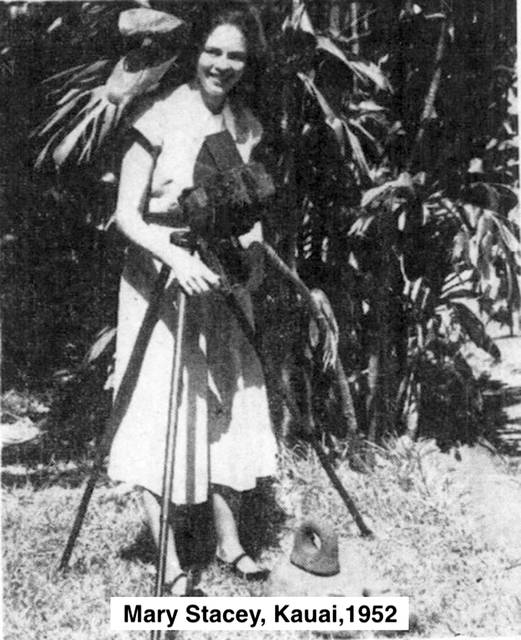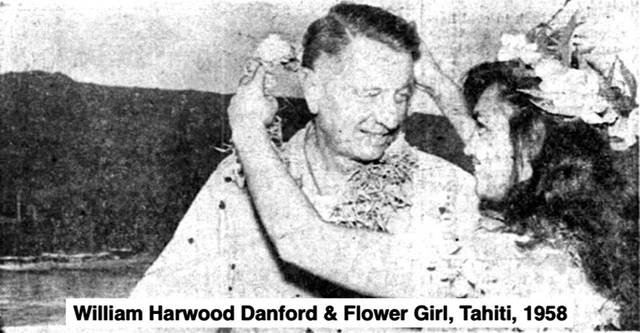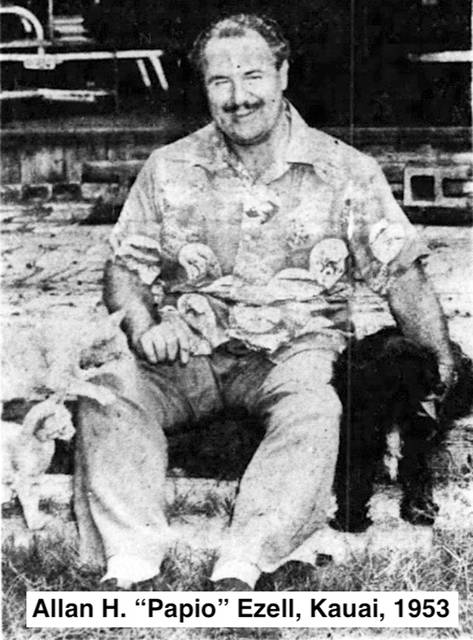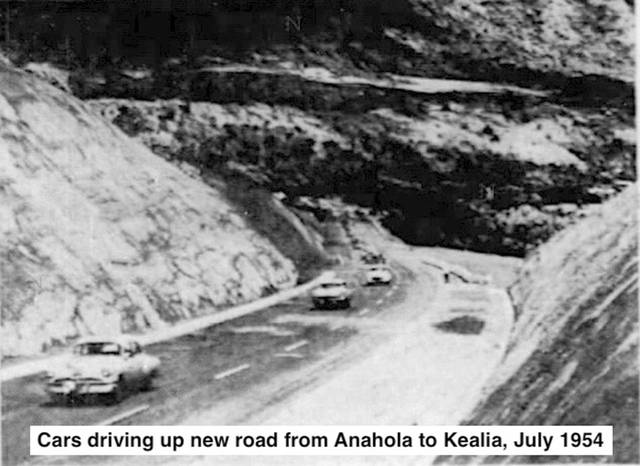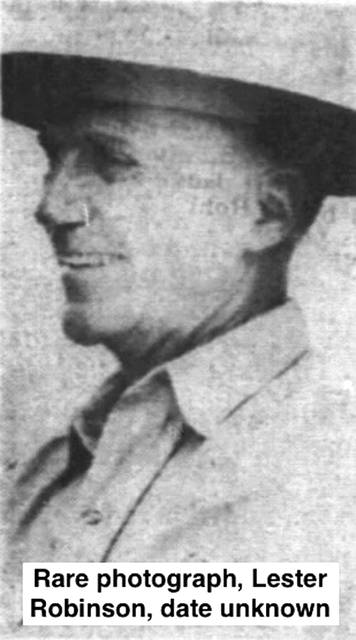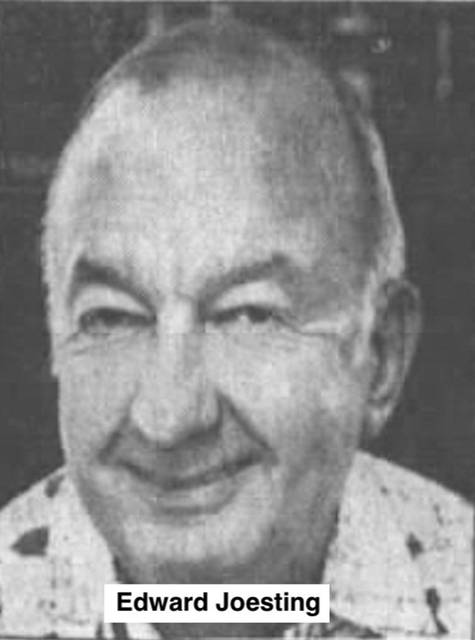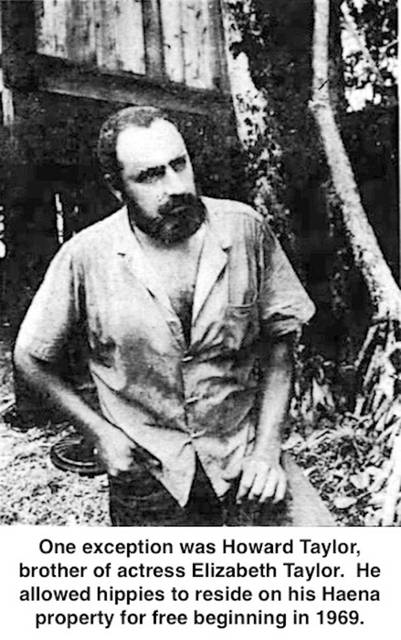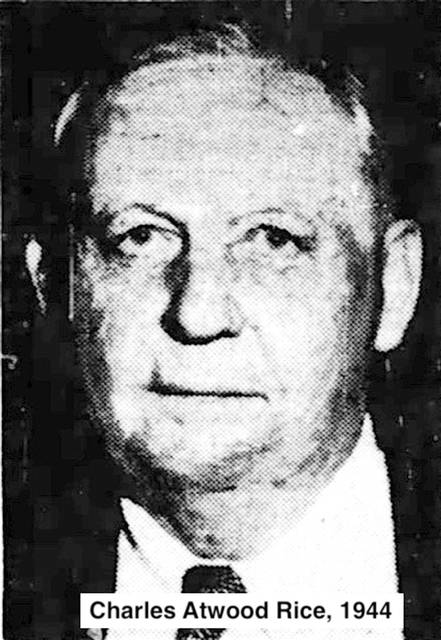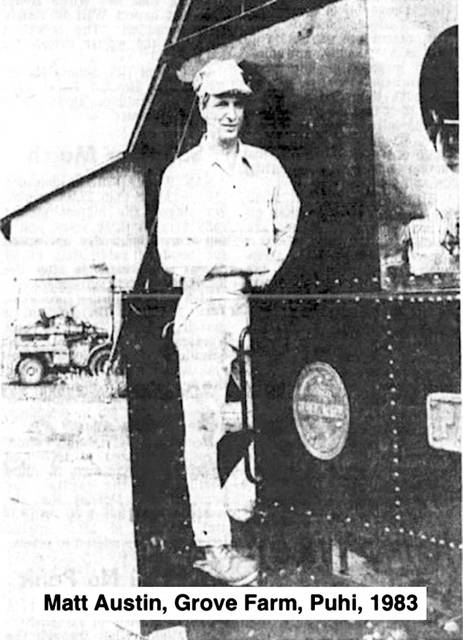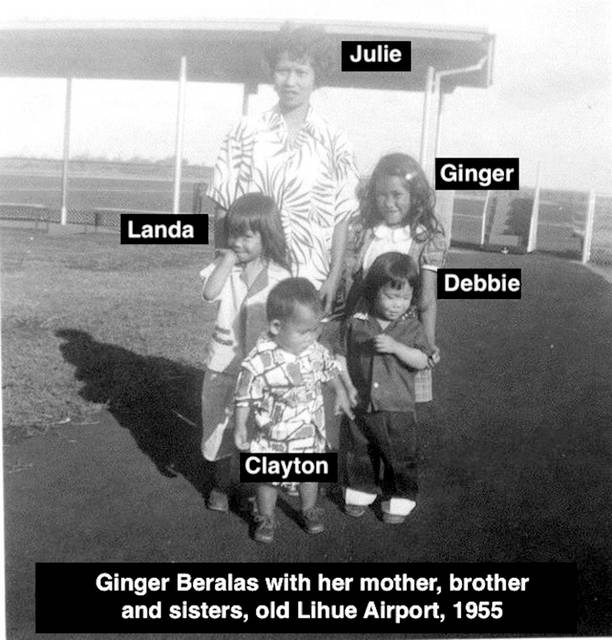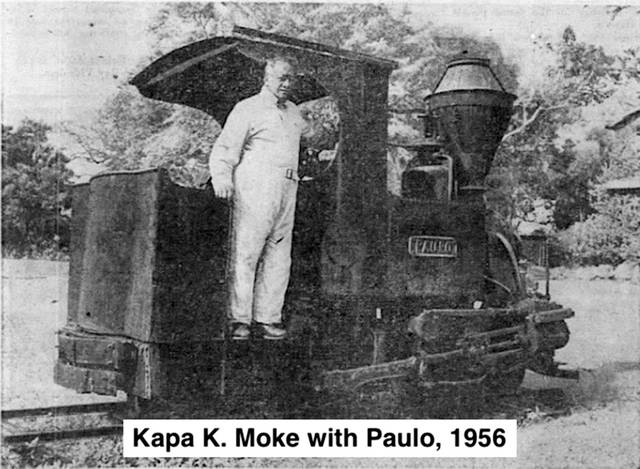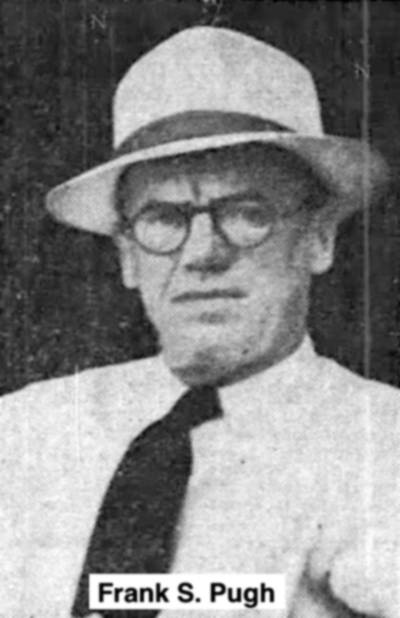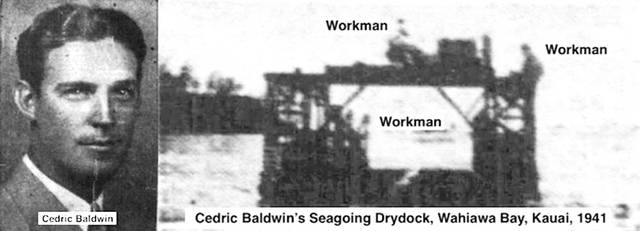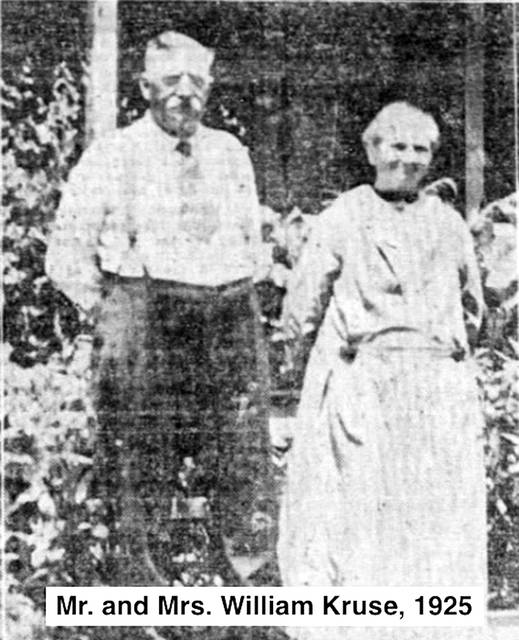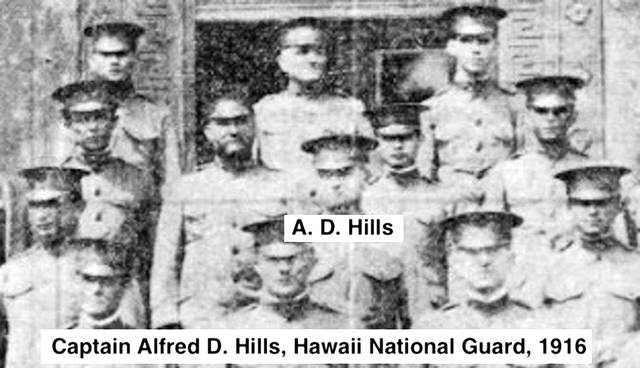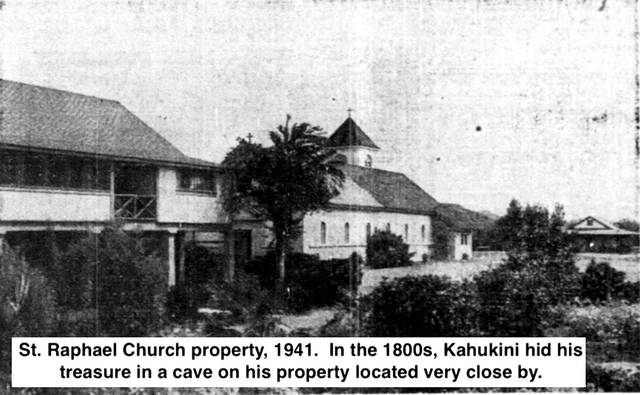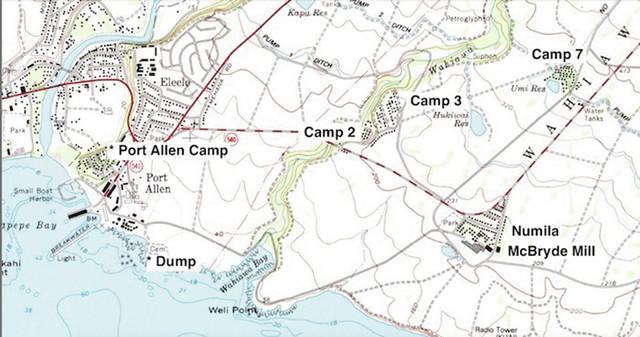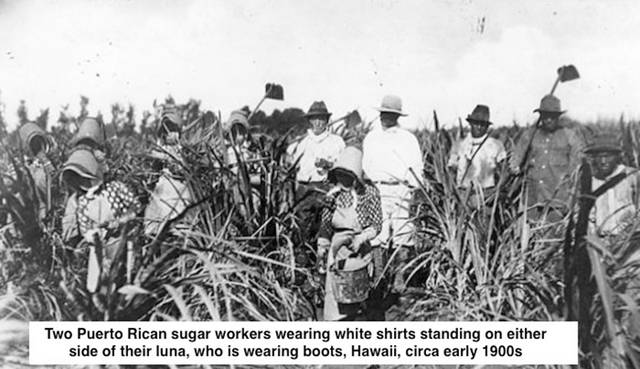Miss Mary Stacey’s Kauai archaeological survey
In 1952, a survey of important private collections of Hawaiian artifacts was made on Kauai by Miss Mary Stacey of Honolulu, a member of Dr. Kenneth Emory’s class in anthropology at the University of Hawaii.
On maneuvers with the Kauai Volunteers
During World War II, the Kauai Volunteers, a local militia formed to supplement the Armed Forces and National Guard in defense of Kauai, conducted maneuvers with the regular Army in which the volunteers would generally impersonate the enemy.
Kauai’s Allan H. ‘Papio’ Ezell
Born in New Mexico and raised in Texas, Allan H. “Papio” Ezell (1915-1970) was a territorial legislator from Maui from 1948 to 1950, and again from Kauai from 1958 to 1959, who while on the campaign trail was known for amusing his constituents by speaking Tahitian, Samoan, Hawaiian and English with a Texas accent.
The Anahola-Kealia Highway Constructed in 1954
On July 21, 1954, the newly constructed Anahola-Kealia highway was formally opened at ceremonies held on it in Anahola that were attended by about 500 persons.
Niihau owner Lester Beauclerk Robinson
Lester Beauclerk Robinson (1901-1969) was the great-grandson of Eliza McHutcheson Sinclair, who’d purchased the island of Niihau from Kamehameha V in the names of her two sons, Francis and James Sinclair, as indicated on Royal Patent No. 2944, dated Feb. 23, 1864.
Edward Joesting, the Author of “Kauai: The Separate Kingdom”
Born in Minnesota and educated at Pomona College, California, Hawaii bank executive Edward Joesting (1925-1986) was the author of the book “Kauai: The Separate Kingdom,” published in 1984 – a history of Kauai encompassing the time of pre-Western contact through to the end of the Hawaiian Monarchy in 1893.
1960s-era hippies were not welcome on Kauai
When the first hippies arrived on Kauai in 1967 from the Mainland United States, they went to Kalalau Valley, but left a short time later, 15 men and women in all, after being warned by Warren Robinson of Gay & Robinson that they were trespassing on 780 acres of private property under permit to his father, Selwyn Robinson.
Charles Rice’s Kipu Ranch During World War II
During World War II, sugar planter, rancher and politician Charles Atwood Rice (1876-1964) — the grandson of Kauai missionaries William Harrison and Mary Sophia Hyde Rice, and the son of William Hyde Rice, the governor of Kauai under Queen Liliuokalani — entertained numerous military personnel on Kauai at his Kipu Ranch, now the private property of Wm. Hyde Rice, Ltd.
Matt Austin, Grove Farm Museum’s Locomotive Restorer
In 1973, Miss Mabel Wilcox, the niece of Grove Farm Plantation founder George Norton Wilcox, decided to restore four old, broken-down sugar plantation locomotives stored in a Grove Farm warehouse at Puhi, and then use them to take visitors for rides at a plantation museum she planned to establish at her Grove Farm homestead in Lihue.
Ginger Beralas’s Lihue Plantation train ride
In her book, “Personal Recollections of Growing up on Kauai, Hawaii in the 1950s and 1960s,” my wife, Ginger (Beralas) Soboleski, wrote about a special train ride she took one Sunday morning in 1955 with her father, Lihue Plantation employee Al Beralas, when she was 6 years old, residing in Lihue Camp A and attending the old Lihue Grammar School in Pua Loke.
Hawaiian Canneries manager Albert Horner’s Waipouli residence
In 1930, at a cost of about $18,000, Albert Horner Jr., the manager of Hawaiian Canneries Co. of Kapaa, built a two-story, 14-room frame mansion, designed by Honolulu architect Ralph A. Fishbourne, at Waipouli, on property where the Lae Nani condominiums are now situated.
Kauai locomotive engineer Kapa K. Moke
Born in Koloa, Kauai, Kapa Keikeokalani Moke (1886-1965) was for many years a sugar train locomotive engineer, first for Koloa Sugar Co. and later for Grove Farm Co.
Kauai’s first official bicycle race
Kauai’s first official bicycle race took place on the morning of July 4, 1927, starting at the Koloa side of the Hanapepe Bridge on Hanapepe Road, and finishing at the Makaweli baseball field, a distance of approximately four miles.
Kalaheo Vocational School Principal Frank S. Pugh
Born and educated in England, Frank S. Pugh (1886-1949) arrived on Kauai in 1921 to become the industrial supervisor of Kauai schools, and in 1923 was appointed principal of Kalaheo School, where he was largely responsible for the construction of a manual training shop in that same year.
McBryde Sugar Co. Manager Cedric Baldwin’s drydock
Cedric Baldwin (1901-1945), the manager of McBryde Sugar Co. from 1938 to 1942 and an avid deep-sea fisherman, was the inventor, in 1941, of a unique, small-boat drydock.
German Immigrants William & Louisa Kruse Of Kauai
In May 1883, German immigrants Mr. William Kruse (1856-1936) and Mrs. Louisa Kruse (1857-1925), with their three children, debarked from the steamer Ehrenfel at Koloa Landing with a number of other German immigrant families following a five month voyage from Germany.
A.D. Hills, The ‘Copra King Of Kauai’
A.D. Hills (1874-1952), the “Copra King of Kauai,” was born in Tahiti, the son of an English army officer and the grandson of a French admiral and a Tahitian princess.
Kahukini’s Koloa secret treasure cave
At Koloa, Kauai, during the 1800s, there lived a very energetic and shrewd Native Hawaiian businessman by the name of Kahukini (early 1800s-1883), whose 20-acre property was located very close to St. Raphael Catholic Church, founded in 1841 by Irish-born Fr. Arsenius Walsh (1804-1869).
Collecting trash at McBryde Sugar Co.
My introduction to McBryde Sugar Co. (1899-1996) came in 1971, when I was residing with my wife, Ginger, and our children, Michelle and Brett, in the old camp house of Ginger’s grandparents, Rita and Agapito Sadang, at Kapaa Stable Camp on Kaapuni Road.
Puerto Rican sugar contract laborers arrive in Hawaii
The first contingent of immigrant Puerto Rican sugar contract laborers – 56 in number – arrived in Honolulu aboard the S.S. City of Rio de Janeiro on Dec. 23, 1900, and were sent to Lahaina, Maui on the steamer Lehua to work at Pioneer Mill Company.

